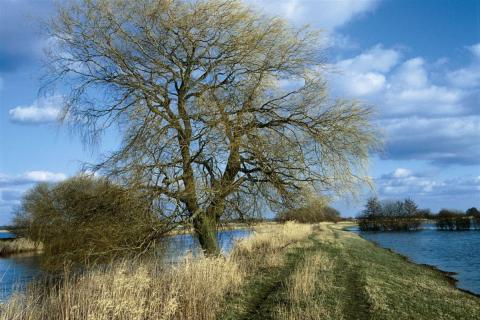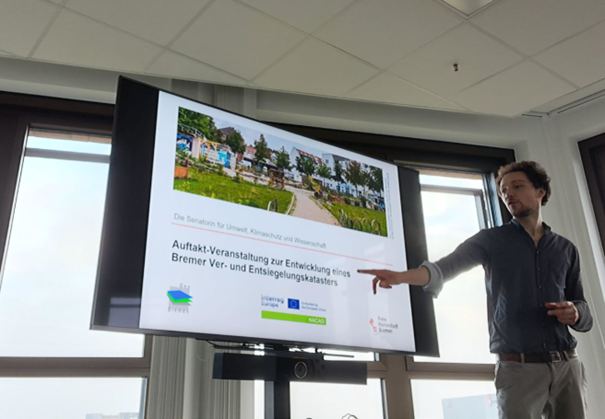Stakeholder meetings with different agenda in Germany
Focus on river Kleine Wümme
In September second stakeholder meeting took place in Bremen. The focus was on nature-based climate change mitigation in rural parts of the city. More deeper, the thematic focus was on the river Kleine Wümme, which flows along the outside of the city, and connects the city with marsh and peat soil areas of the free landscape. The aim of this stakeholder meeting was to discuss the potential of the river, its tributaries and catchment areas for water retention and to identify measures that improve both the ecological quality of the river and its climate-related functions.

Water management on peat soils in the grasslands with valuable meadow birds close to the Wümme river.
The river Kleine Wümme and the connected system of ditches suffer increasingly from low water levels in dry periods, which is a problem for the water supply of important old-growth trees in the nearby public green spaces (which among many functions also sequester carbon) as well as the aquatic fauna. During the stakeholder meeting were three types of measures with a high potential identified: (i) Potential use of the ditch system in the urban forest to absorb water during heavy rain events and release water into dry periods; (ii) Increasing the flowability of streams, including by desilting; (iii) Renaturalization of riparian areas (including de-piping), also with the goal of keeping more water in the landscape.
October meeting centered on unsealed soils
Unsealed soils provide a variety of functions, including carbon sequestration. Against this background, the Free Hanseatic City of Bremen aims to compile a sealing and unsealing inventory as a knowledge base for targeted unsealing measures. The objective of this third NACAO stakeholder meeting on 9.10.2023 was to bring together key stakeholders in the field of soil sealing with public responsibilities and to develop a common understanding on: (i) requirements for a sealing and unsealing inventor, (ii) criteria for defining an unsealing potential, (iii) existing data and potential data sources, and (iv) relation to existing resources and tasks of the Bremen administration.
Water management on farmed grasslands on soils with large peat thicknesses
At the end of the meeting, the fifteen stakeholder present agreed on a three-step approach to creating an inventory of sealing and unsealing. First, mapping of sealed soils. Second, the identification of a basic unsealing potential, with possible necessary conditions being ownership structure, drainage and soil contamination.Third, identifying a priority (or qualified) unsealing potential, with possible criteria including biotope connectivity, climate adaptation (especially heat), heavy rainfall prevention and infiltration, floodplains, and neighborhood green space supply.
The following next tasks were agreed upon at the stakeholder meeting: First, a definition of sealed and unsealed surfaces will be sent out to and reviewed by stakeholders to refine and fix a common understanding. Second, a survey on the goals of each stakeholder and the resulting requirements for the sealed and unsealed land inventory will be developed and circulated.

